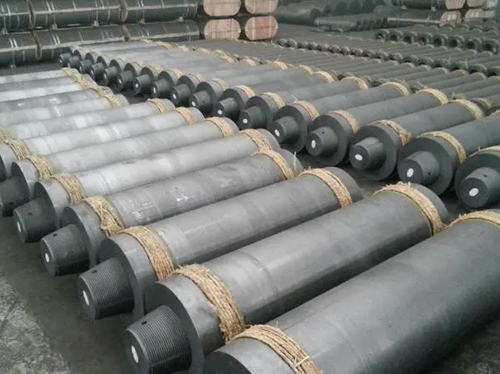
Graphite electrodes are an essential component of electric arc furnaces in a variety of industries such as steel, aluminum, and silicon. Therefore, choosing high-quality graphite electrodes plays a critical role in ensuring efficient and cost-effective industrial operations. In this article, we will discuss the factors to consider when selecting the best graphite electrodes for high-efficiency industrial applications.
Material Quality:
The quality of the raw material used to manufacture graphite electrodes is critical for ensuring a consistent and high-performance electrode. Graphite electrodes should be made from high-quality petroleum coke or needle coke. Petroleum coke should have low sulfur content and high quality of calcination. In addition, production processes such as crushing, screening, and blending of the coke should be optimized to ensure consistency and purity of the final product.
Electrical Conductivity:
Electrical conductivity is a key factor in determining the efficiency of the graphite electrode. Higher electrical conductivity results in less electrical resistance, which translates to more efficient furnace operations. Electrical resistance can generate heat and consume energy, which can lower productivity and increase costs. Graphite electrodes with greater electrical conductivity can withstand higher current densities, resulting in higher productivity and lower energy consumption.
Thermal Conductivity:
Thermal conductivity is another key attribute that influences the performance of the graphite electrode. Graphite electrodes with high thermal conductivity can dissipate heat more quickly, resulting in fewer hot spots and preventing the electrode from cracking or breaking under harsh furnace conditions. High thermal conductivity can also help to minimize the wear and tear of the electrode and increase its longevity.
Diameter and Length:
The diameter and length of the HP graphite electrode are critical factors to consider when selecting the electrode for an industrial application. In general, a larger diameter of the electrode translates to higher current carrying capacity and a more robust electrode. Additionally, a longer electrode can offer more flexibility in the furnace operation and an extended lifetime. The electrode length and diameter should be considered carefully to optimize furnace efficiency and performance.
Quality Control:
Quality control procedures are crucial to ensuring that the HP graphite electrodes meet the required quality standards for high-efficiency industrial applications. The manufacturing process should follow strict guidelines to ensure that each electrode is homogeneous in material, free from defects, and has consistent physical properties. Also, the finished electrode should undergo rigorous testing to ensure that it meets the required electrical and thermal conductivity, dimensions, and visual appearance specifications.

